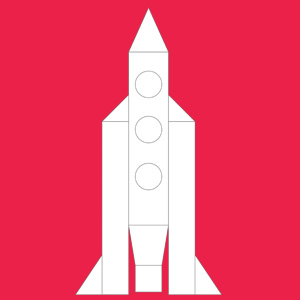Up up up! Build and launch your own rocket
In this set of four group activities pupils build three different rockets. The first is a simple paper rocket powered by blowing into a straw, the second is a more complex paper rocket powered by squeezing a water bottle, and the third is a chemical rocket. Pupils will launch their rockets to investigate which variables affect the distance travelled and their trajectory. They will eventually gain a good understanding of rockets are, and how they work.
Subject: Science, Arts, Physics, Technology Learning Objectives:
- Learn what a rocket is and why it goes up.
- Measure the distance travelled by the rocket, and understand that it depends on the initial launch energy or power, and the initial launch angle.
- Learn that objects need energy to move.
- Explore and test ideas whilst building a machine (paper rocket) in a group.
Age range:
8-12 years old
Time
Lesson: 25 to 60 minutes per activity
Resource available in:
Activity 1: Get me off this planet!
In this activity, pupils investigate rockets, including analysing their main characteristics, and investigating why they have different sizes. Pupils develop an understanding of what rockets are, and what they are used for.
Equipment
- Pen/pencil
- Scissors
- Glue
Activity 2: Air for the rocket I
In this activity, pupils begin to explore paper rockets. They build a paper rocket and observe it’s performance in the air in two different development stages. Firstly the rocket is launched with an open end. Secondly it is launched with a folded end, which represents a nose. Pupils use a drinking straw to launch the rockets. They should eventually understand that rockets work using Newton’s Third Law of Motion.
Equipment
- 1 A4 sheet of paper
- 1 straw (wide diameter if possible)
- 1 pencil (of the same diameter as the straw, or slightly bigger)
- 1 pair of scissors
- Sticky tape
- Template for the fins (appendix 2)
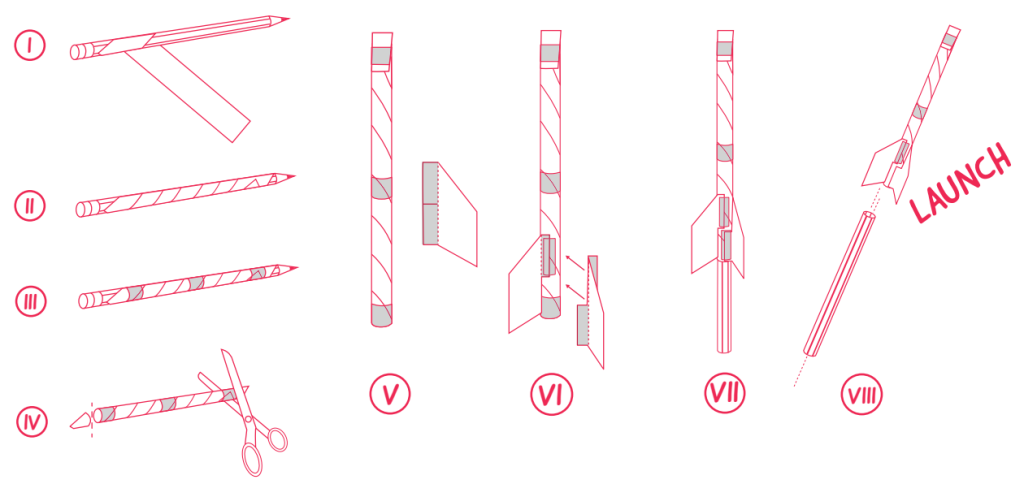
Activity 3: Air for the rocket II
In this activity, pupils build a paper rocket and use a plastic water bottle to launch it. They investigate how changing the launch angle affects the trajectory of the rocket and answer the key question: which launch angle results in the rocket travelling the furthest horizontally?
As a follow up activity, pupils can investigate how the launch pressure affects the trajectory of a rocket. Pupils will come to understand how rocket motion is affected by changing variables.
Equipment per group
- 2 A4 sheets of paper
- Nose and fins template (Appendix 3)
- 1.5 l plastic water bottle (Ensure this fits onto a 3D printed launch elbow)
- 3D printed launch elbow
- Protractor
- Scissors
- Sticky tape
- Long measuring tape

Activity 4: Fuel for rocket
In this activity, pupils make an effervescent canister rocket in order to investigate the relationship between the amount of fuel that a rocket uses, and the distance that it travels. Through designing their own experiment to carry out their investigation, pupils develop their understanding of how rockets work.
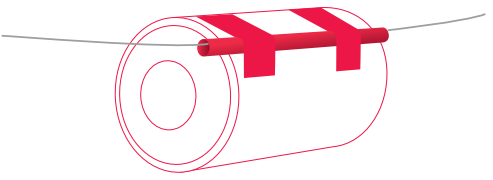
Equipment per group
- 1 35mm white film canister (the white ones work
better than black ones) - Effervescent tablets
- Water
- Scissors
- Sticky tape
- Long measuring tape
- 2 chairs
- 5 metres of fishing line
- 1 drinking straw
- 1 paper cup
Keywords:
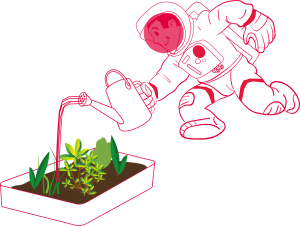
AstroFarmer – Learning about conditions for plant growth
Brief description: In this set of six activities, students will investigate which factors affect plant growth, and relate these factors to growing plants in space.
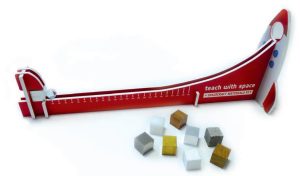
Spacecraft Materials Kit
Brief description: Pupils can use the ESA Spacecraft Materials Kit to experimentally investigate a variety of different materials. A set of five activities enables pupils to get

Space Bears – Lab-experience with Tardigrades
Brief description: In this set of experimental activities, students will investigate the survival abilities of tardigrades, also known as water bears. They will expose conditions


